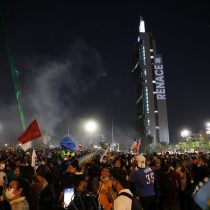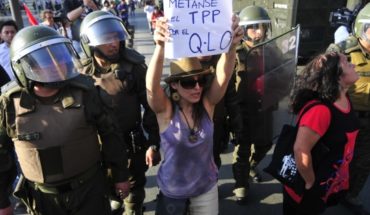
Since the 2000s, we have witnessed in Chile a series of social mobilizations that demonstrated a genuine interest in citizen participation and involvement in public affairs. The student movement was the most faithful crystallization of that impulse, but it was replicated at the national level in relation to other issues and actors. Through these demonstrations, a certain conviction was formed regarding the need – and effectiveness – for citizens to demand openly and directly from the political world.
While collective action showed that it could bring triumphs, it was often partial achievements, sometimes simply cosmetic and far below the transformative expectations of its protagonists. Thus, what was incubated until the social explosion of October 2019, was not the indifference or disinterest in political participation, but the deep hopelessness in the form of participation offered, the growing distance between represented and representatives, and the distrust in which those who claimed to listen to them, were effectively able to bring those voices into the sphere of public decisions.
There is no doubt, then, that the constituent process should take charge of that history and that frustration. This implies incorporating citizen participation as a central axis, avoiding replicating the logic of political representation that has been unable to understand the real needs of the governed. In this sense, the expectations placed on the incorporation of citizen participation in the Constitutional Convention is a matter of substance and form. Not only is this expected to be the way to draw up a constitutional text that genuinely allows for democratic deliberation, but the hope is that the way in which the Convention itself operates will not reproduce the bad practices of the past.
If the Constitution of 80 “feared” democracy and was made behind the backs of the citizens, reflecting in its text a series of mechanisms to block democratic participation, we should hope that a new Constitution not only outlines the bases of a new deal between the world of politics and the citizens, but that in the very process of its drafting motivates , actively convene and engage all people.
This means developing more and better mechanisms to influence public affairs. In particular, efforts are being made to include those who have historically been marginalized from political decision-making spheres, such as children and adolescents, persons with disabilities, those living in rural and remote geographical areas, institutionalized older persons, persons deprived of liberty, among others. Thus, the classic model of representativeness is no longer enough. The Constitutional Convention has the opportunity to show that it is possible to develop new forms of direct and participatory democracy.
The methodological options for this are varied, among others, public hearings where people or organizations present their proposals; instances of dialogue and deliberation such as cabildos, round tables and assemblies; and citizen consultations through face-to-face or digital mechanisms. The international experience offers us multiple examples of constituent processes where citizen participation was a reality. This is the case of Colombia (1991), in which 1,580 open dialogue spaces were implemented for all citizens, coordinated by mayors, social organizations, universities and indigenous councils, and systematized in 100,569 proposals. Also in South Africa, where the Constituent Assembly (1994 – 1996) promoted communication with civil society through media campaigns, the creation of a printed newspaper and a website, and received a total of 2 million opinions and comments on constitutional proposals. A third example is the Irish process (2012-2014), where the Constitutional Convention had hearings of experts and interest groups on the various topics. The national experience also offers us a wide range of examples of collective participation, where people organize, debate, systematize and make their ideas known.
Some of the lessons learned from these experiences is that whatever form participation materializes, it should not be given over to improvisation. It is necessary to allocate human and financial resources to design a process of integral participation, incorporated in the own regulation of the Convention and that ideally has a technical team to implement each of the required actions. Likewise, participation must have as its starting point information, that is, make the constituent process an act that is understandable, transparent, auditable and universally accessible, where each citizen can feel part of it and follow the route of their contributions and opinions in the course of the debate.
The relevance of citizen participation in this constituent process is such that it is no exaggeration to think that what is at stake through it is not only the legitimacy of a new Constitution, but the very recovery of confidence in our democracy.
Paula Medina González, Academic Faculty of Law and Humanities, Central University, New Constitution Observatory
The content of this opinion column is the sole responsibility of its author, and does not necessarily reflect the editorial line or position of El Mostrador.





